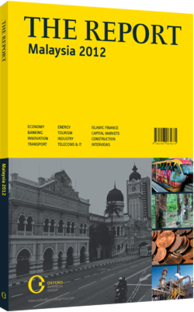No place like home: Domestic travel is becoming increasingly popular
While it has traditionally focused on attracting visitors from international markets such as Australia, Europe and North America, over the past decade Malaysia’s tourism industry has benefitted from rapidly expanding domestic receipts as well. The increase in travel among a substantial percentage of the country’s population can be attributed to a number of factors. Domestic tourism got a major boost in 1999, for example, when the government introduced the five-day workweek, as many citizens took to travelling on the newly freed-up two-day weekend. More generally, rising incomes over the past 15 years have encouraged many Malaysians to make domestic travel a regular part of their monthly expenditure. “Internal travel is common here,” said Praba G Menon, the general manager of Hotel Istana, a luxury property in KL.
HITTING THE ROAD: In 2011 Malaysian residents ages 15 and up made 1.24 trips within the country on average, according to data from the Department of Statistics (DoS). The majority of these trips coincided with religious festivals and public holidays. Other common reasons for travelling within Malaysia include shopping, leisure tourism, business and education. Popular destinations for domestic tourism include KL and the Klang Valley, Sabah, Sarawak and Kedah Johor.
The domestic tourism segment has grown in recent years. In 2011 the number of domestic tourists in Malaysia reached 131m, up 13.4% from 115.5m in 2010, according to the DoS. Around two-thirds of the 2011 total, or 88.4m tourists, travelled from urban areas to rural areas, with the remainder travelling in the opposite direction (mainly to KL and the greater Klang Valley). Some 65%, or just over 85m, of the domestic tourists in 2011 took trips that lasted less than 24 hours, while the remaining 35% travelled for at least one night, according to the DoS.
URBAN VS RURAL: In general, urban residents travel for slightly longer periods of time and spend more while on the road than rural residents. In 2011 urban residents stayed 2.47 nights and spent RM562 ($181) per trip on average, compared to 2.39 nights and RM431 ($139) per trip on average for rural inhabitants. These figures are in line with average incomes in different parts of Malaysia – in general, urban residents tend to earn more than their counterparts in rural areas, and thus they are able to afford to travel more. According to statistics from the World Travel and Tourism Council, domestic travel spending made up 42% of the sector’s direct contribution to GDP in 2011.
The most common reason for Malaysians to travel within the country in 2011 was to visit friends and relatives. Hari Raya (the Muslim holiday that marks the end of Ramadan) is consistently one of the most popular times for Malaysians to visit family and friends.
According to the DoS, nearly 76% of domestic tourists who took trips that lasted longer than 24 hours in 2011 were visiting friends and relatives. Similarly, 83.9% of all overnight domestic tourists stayed with friends or relatives, as opposed to in a hotel or guesthouse. Almost 98% of all domestic tourists in Malaysia in 2011 travelled by land, nearly 90% of them in private vehicles.
LOOKING AHEAD: Both the government and private sector players have invested heavily in domestic tourism in recent years. The state has poured millions of ringgits into transport infrastructure in the capital and throughout the Klang Valley, for example, which is expected to benefit domestic tourists just as much as visitors travelling from abroad.
Private tour operators, meanwhile, are working to develop products and services with locals in mind. Living Social Malaysia, which offers daily online travel deals, has seen steadily increasing interest from nationals. According to a recent survey carried out by Living Social, Sabah, Sarawak and Langkawi are the most popular leisure travel destinations for urban residents.
Boosting connectivity between Peninsular Malaysia and Borneo is considered to be a key driver for domestic tourism growth. In July 2012, the governments of Sabah and Sarawak announced that they were planning to buy MAS wings, a subsidiary of Malaysia Airlines.
You have reached the limit of premium articles you can view for free.
Choose from the options below to purchase print or digital editions of our Reports. You can also purchase a website subscription giving you unlimited access to all of our Reports online for 12 months.
If you have already purchased this Report or have a website subscription, please login to continue.

